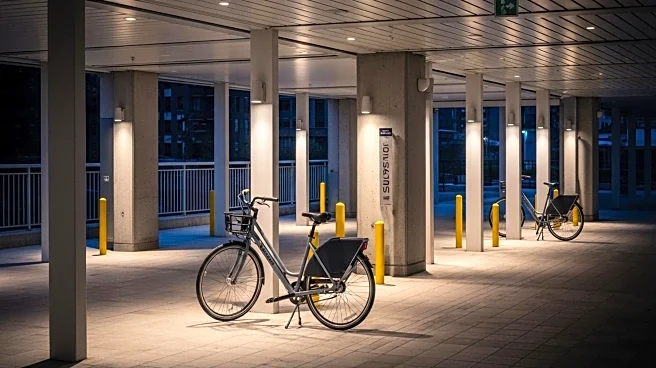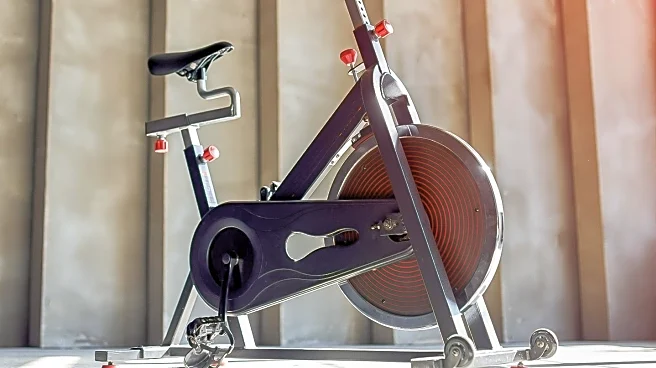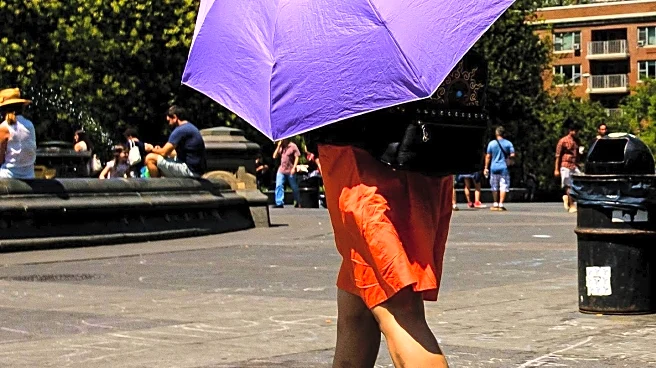What's Happening?
Oonee, a Brooklyn-based micromobility company, has announced the opening of New York City's first secure indoor bike storage hub in Sunset Park. The facility, located at One Sunset, a mixed-use building at 201 25th Street, will offer space for 95 bikes along with battery swapping, charging, and bicycle repair services. This initiative is inspired by similar facilities in the Netherlands and marks the first time a developer has included such a facility as a community benefit. The hub is part of a larger effort by the city to expand secure bike parking facilities, with plans to establish 500 such facilities across the five boroughs by 2029.
Why It's Important?
The introduction of secure indoor bike parking hubs in New York City represents a significant advancement in urban micromobility infrastructure. This development is expected to enhance accessibility, sustainability, and convenience for cyclists, promoting active transportation as a viable option. By providing secure storage and additional services, the hub addresses common concerns about bike theft and maintenance, potentially increasing the number of people who choose cycling over other forms of transportation. This initiative also reflects a growing trend of integrating community benefits into urban development projects, which could serve as a model for other cities in North America.
What's Next?
The city plans to select a contractor this year to implement the broader initiative of establishing 500 secure bike parking facilities by 2029. As the hub at One Sunset is scheduled for completion this fall, it will serve as a pilot for future developments. Stakeholders, including city officials and developers, will likely monitor its success to inform the rollout of additional facilities. The integration of such amenities in urban planning could lead to increased investment in micromobility infrastructure, further supporting sustainable transportation options.
Beyond the Headlines
The establishment of secure bike parking hubs may have broader implications for urban planning and community development. By prioritizing micromobility infrastructure, cities can reduce reliance on cars, decrease traffic congestion, and lower carbon emissions. This shift could also influence cultural attitudes towards cycling, positioning it as a mainstream mode of transportation. Additionally, the inclusion of community benefits in development projects highlights a growing emphasis on social responsibility and equitable access to resources.












